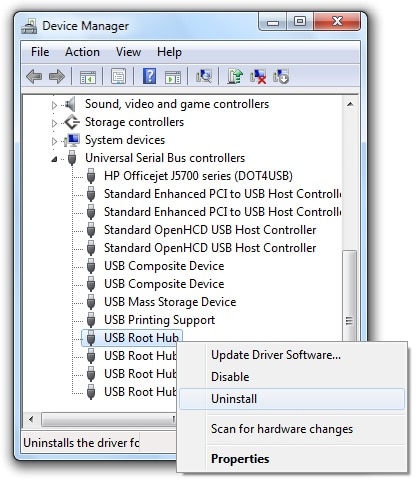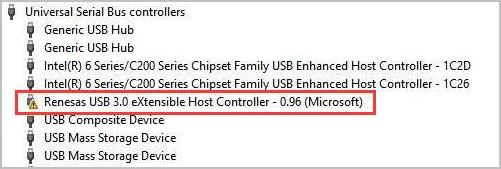

- #How to upgrade usb host controller windows 7 how to
- #How to upgrade usb host controller windows 7 serial
- #How to upgrade usb host controller windows 7 drivers
- #How to upgrade usb host controller windows 7 driver
- #How to upgrade usb host controller windows 7 full
You can use these events to determine the root cause of most device enumeration failures.

While USB event collection is enabled, the USB hub event provider reports the addition and removal of USB hubs, the device summary events of all hubs, and port status changes.
#How to upgrade usb host controller windows 7 driver
The USB driver ETW event providers are included in all editions and SKUs of Windows 7. The USB hub driver layer consists of the USB hub driver (usbhub.sys).
#How to upgrade usb host controller windows 7 drivers
The USB host controller driver layer includes the host controller port driver (usbport.sys) and the miniport drivers (usbehci.sys, usbohci.sys, and usbuhci.sys). We added ETW logging to the USB host controller drivers and to the USB hub driver in Windows 7. This translates into ease of debugging USB-related issues, which should provide a more robust USB driver stack in the long term. USB driver stack ETW event logging supports most or all debugging capabilities that are provided by the existing ad hoc logging mechanism in the USB driver stack, without any of its limitations. In Windows 7, ETW provides an event logging mechanism that the USB driver stack can exploit to aid in investigating, diagnosing, and debugging USB-related issues. You can debug USB problems by using hardware or software analyzers, but they are very expensive and are available to only a small percentage of professionals.
#How to upgrade usb host controller windows 7 full
Even with full access to the hardware and a crash dump, extracting the relevant information has been a time-intensive technique that is known only by a few core USB driver developers. It has been difficult or impossible to investigate and debug USB device issues without direct access to the system, and/or devices, or in some cases a system crash dump. These compatibility issues cause problems for customers such as device operation failures, system hangs, and system crashes. The large installed base and proliferation of USB devices have uncovered compatibility issues between the Windows USB software stack, the USB host controller, and USB devices. There is a very large installed base of USB host PCs and USB peripheral devices, and system vendors, device vendors, and end users expect and demand that USB devices operate flawlessly at the system and device level. USB is one of the most prevalent means of connecting an ever-increasing variety of peripheral devices to PCs. At the same time, several new features have been added to ETW to improve the developer and end-user experiences.įor more information about ETW and WPP, see Event Tracing and Event Tracing for Windows (ETW). In short, the new unified APIs combine logging traces and writing to the Event Viewer into one consistent, easy-to-use mechanism for event providers. One of the most significant new features is the unified event provider model and APIs. ETW has also been abstracted into the Windows preprocessor (WPP) software tracing technology, which provides a set of easy-to-use macros for tracing printf-style messages for debugging during development.ĮTW was significantly upgraded for Windows Vista and Windows 7. A growing number of third-party applications use ETW for instrumentation, and some take advantage of the events that Windows provides. ETW is now one of the key instrumentation technologies on Windows platforms. Since then, various core operating system and server components have adopted ETW to instrument their activities. This buffering allows large-scale server applications to write events with minimum disturbance.ĮTW was introduced in Windows 2000. The logging mechanism uses per-processor buffers that are written to disk by an asynchronous writer thread. Additionally, ETW provides the ability to dynamically enable and disable logging, which makes it easy to perform detailed tracing in production environments without requiring reboots or application restarts. It uses a buffering and logging mechanism that is implemented in the kernel to provide a tracing mechanism for events that are raised by both user-mode applications and kernel-mode device drivers. To interpret the event traces, you must also understand the Windows USB host-side drivers in Windows, the official USB Specifications, and the USB Device Class Specifications.Įvent Tracing for Windows (ETW) is a general-purpose, high-speed tracing facility that is provided by the operating system. The topic assumes that you have a comprehensive understanding of the USB ecosystem and hardware that is required to successfully use the USB tracing and logging features.
#How to upgrade usb host controller windows 7 how to
It includes information on how to install the tools, create trace files, and analyze the events in a USB trace file. This information is provided for the benefit of those who develop and debug USB devices.
#How to upgrade usb host controller windows 7 serial
This topic provides information for client driver developers about the tracing and logging features for Universal Serial Bus (USB).


 0 kommentar(er)
0 kommentar(er)
